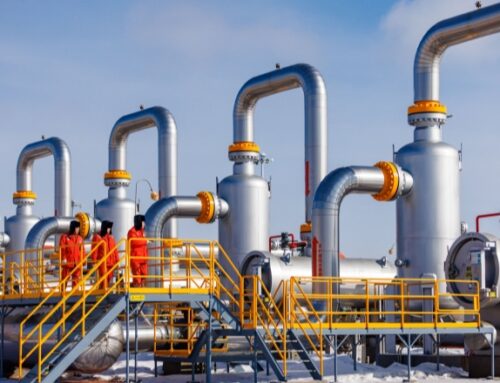Liquid metal could be the long-awaited solution to “green chemical”. Scientists have tested a new technology that promises to replace the energy-intensive chemical engineering processes that have been mainstream since the early 20th century.
Recently, Dr. Tang Junma and his team at the University of Sydney have created a liquid alloy that explains the special catalytic path of liquid metal atoms while realizing the efficient and high selective production of propylene.
Through the configuration matching of metal atoms and reactant molecules in gallium metal solvent, the selective conversion from long carbon chain compounds to propylene was realized, and the whole reaction system could achieve about 95% selective conversion of propylene.
At the same time, the research group also further studied the synergistic effect and catalytic mechanism of liquid atoms, thus filling the theoretical gap of liquid metal catalysts, deepening the understanding of liquid metal catalysts, and providing guidance for the design of liquid metal catalysts.

Liquid metal catalyst technology points
At present, solid metal catalysts have been widely studied and used. However, for specific chemical reactions, the synthesis and use of solid metal catalysts are subject to considerable limitations.
For example, for the synthesis of small chemical molecules ethylene and propylene, numerous solid metal catalysts have been designed at the atomic level. These catalysts have special arrangement requirements for the atoms at the active site. Therefore, the synthesis of the catalyst must undergo a series of complex surface treatments.
This complex synthesis process limits the mass production and use of solid catalysts. At the same time, the solid catalyst is easy to be deactivated under the relevant reaction conditions, which leads to the reconstruction process of the catalyst, and also has a certain negative impact on the use of solid catalysts.

The liquid metal catalyst can make up for the deficiency of other catalysts and provide the possibility to achieve green and low-carbon reaction. However, the high melting point of most metals results in harsh reaction conditions. Moreover, the catalytic mechanism of liquid metal, that is, the interaction and reaction process between liquid metal atoms and reactant molecules, has not been deeply studied and reported before.
It is also reported that gallium, a liquid metal, can be used as a solvent for other metals because of its low melting point. When gallium is used as a carrier, other liquid high-melting metals can be obtained at lower temperatures.
In the solubility range, metals dissolved in gallium exist as dynamic atoms, providing a platform for the study of liquid metal catalysts.
In this study, Tang Junma et al. dissolved a small amount of tin gold and nickel metals in gallium solvent to design and synthesize a liquid alloy with the chemical formula GaSn0.029Ni0.023. At a reaction temperature of 150 ° C, the tin and nickel dissolved in gallium will be dynamically distributed as atoms, and will form a specific atomic configuration on the surface.
When this special atomic arrangement matches the configuration of the long carbon chain reactants, the reactants will react on the surface of the liquid metal, thus achieving selective catalysis and conversion of propylene. Through molecular dynamics simulation and the use of n-decane as a reactant, the research group further studied the co-catalytic mechanism of liquid metal atoms and the transformation path of reactants.
With the structural matching of the reactants and liquid metal atoms, as well as the transfer of hydrogen atoms and structural rotation, n-decane finally achieves the selective conversion to propylene. At the same time, the research group also further tested the catalytic mechanism and broadened the application of this catalyst.
In general, under mild reaction conditions, this study allows the selective conversion of renewable hydrocarbons to propylene small molecules.


The technological breakthroughs of the research have injected new vitality into the chemical industry, providing a more environmentally friendly and sustainable process option. Liquid metal catalyst not only has obvious advantages in energy consumption, but also the relatively low temperature of its preparation provides a more convenient possibility for practical application. This discovery will lay the foundation for the transformation of the global chemical industry to become more environmentally friendly and efficient. However, the researchers also warn that liquid metal catalysts are still dangerous and need to be handled under professional conditions. Overall, this research provides an innovative path to address global greenhouse gas emissions and energy consumption, moving the chemical industry towards a more sustainable future.
Article from M&J International Trading Co., Ltd



